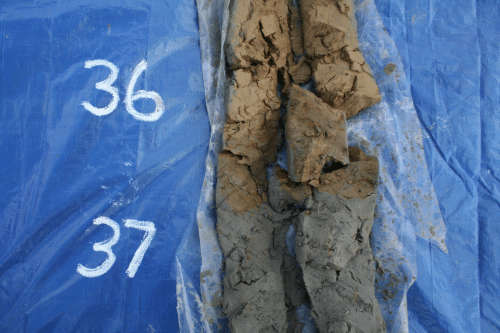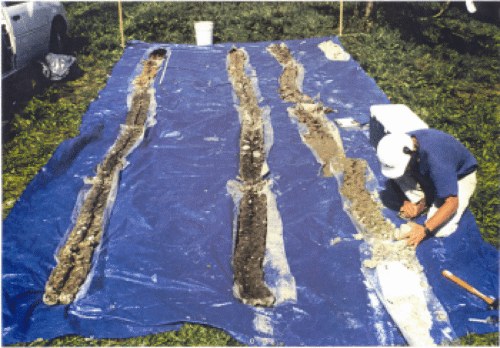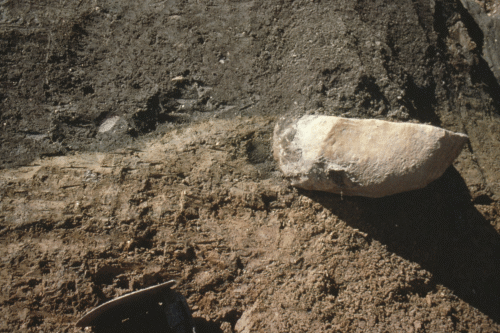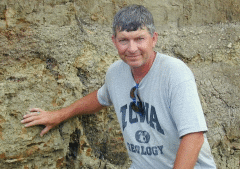On-Demand Webinars
THE MEANING OF SOIL AND SEDIMENT COLOR: PART 2:
Using Soil and Sediment Color to Guide Field Investigations
Soil color is among the most important subsurface descriptors for hydrogeologic, environmental and geotechnical projects. Soil color does not affect the behavior of soil; however, it can indicate the composition and give clues to
- Permeability, both primary and secondary
- Water Table
- Jointing and Fracturing in Fine-Grained Sediments
- Drainage
- Strength, Compaction, Density/Consistency
- Contamination
- Stratigraphy and Facies Changes
 Professionals rarely get a chance to learn about the importance of soil and sediment colors - this webinar series is designed for hydrogeologic, environmental and engineering professional who can benefit and improve project results by discovering how to apply colors to some of the most important site characterization attributes. Professionals rarely get a chance to learn about the importance of soil and sediment colors - this webinar series is designed for hydrogeologic, environmental and engineering professional who can benefit and improve project results by discovering how to apply colors to some of the most important site characterization attributes.
Munsell Soil Colors:
More than just a color name
Soil colors are sometimes described using general colors, such as dark brown, yellowish brown, etc. More often and generally more acceptable, soil colors are also described and quantified by using Munsell soil color charts.
Munsell colors are quantified using a system that separates color into components of hue (relation to red, yellow and blue), value (lightness or darkness) and chroma (paleness or strength).
The importance of using Munsell soil color charts goes far beyond consistency of visual inspection. For example, many weathering zones are defined specially by their Munsell soil color designations. The water table may also be identified in low-permeable sediments by the secondary colors defined by Munsell soil colors.
Register now for this two-part webinar series and demystify the meaning of soil color. Learn critical context about how soil colors are key indicators for certain hydrogeologic and geotechnical properties in the subsurface

PART ONE OUTLINE:
- Soil vs. Sediments
- Primary Depositional Properties
- Properties Developed During Weathering and Soil Development
- Primary Sediment Properties
- Sediment Origins and Color
- Examples
- Near Surface Weathering and Soil Development
- Basic Redox Chemistry
- Effects of Ground Water
- Near-Surface Water Table Effects
- Oxidation and Reduction Processes
- Determining Water Table History With Color
- Complications
- Monitoring Strategies
PART TWO OUTLINE:
- Field Observations
- Exposures
- Drilled Borings
- Weathering Below the Soil Profile
- Fracture Network Development
- Oxidation and Reduction
- Color As a Guide for Identifying Water Table Relationships Below the Soil Profile
- Examples
- Identifying Altered Water Table Relationships
- Color and Color Pattern Considerations
- Chemical Indicator Methods
- Monitoring Strategies
- Case Studies and Examples

"It was great! I learned a lot, but the chemistry aspects of soil really stood out to me"
- Elizabeth Zink, NTM Engineering, Inc.
"Thanks to MidWest GeoSciences for having these webinars available to complete my continuing education for my PG. What I really like is the wide range of topics and expertise of the people giving the webinars."
- Robert Trahan, Michael Pisani and Associates
Instructors Bio
 E. Arthur Bettis III, PhD is a recognized authority on Upper Midwestern soils. Art specializes in reconstructing past landscapes and environments using data gleaned from physical and geochemical studies of deposits and soils. E. Arthur Bettis III, PhD is a recognized authority on Upper Midwestern soils. Art specializes in reconstructing past landscapes and environments using data gleaned from physical and geochemical studies of deposits and soils.
Art is a gifted instructor with remarkable insights about key geologic concepts that apply to professionals in consulting, regulatory agencies and industry management. Art's applied research in soil science, geomorphology, hydrogeology and stratigraphy build the foundation of best environmental and engineering practices.
Art brings these insights to this remarkable two-webinar series dedicated to soil color and how it relates to professionals working on hydrogeologic, environmental and geotechnical projects
| Fee: |
299.00 USD Per Webinar
|
| Materials and Downloads: |
Session Slides (PDF)
Record of Attendance Form (PDF)
|
Number of
Participants: |
AS OF JUNE 1, 2020, WEBINARS ARE PRICED FOR INDIVIDUALS WORKING ALONE. Pricing is discounted for individual registrations for people working alone.
|
Continuing
Education
Certificates: |
$14.95 each. Official CEU certificates are available as an option. After successful completion of this webinar, a link will be provided to order a certificate.
|
| Access: |
On-demand, anytime 24/7. |
| Discounts: |
Buy 3 on-demand webinars, and get 3 on-demand webinars for free!
|
| Duration: |
90 minutes |
| PDH Earned: |
1.5 hours |
| |
|
| Instructor(s): |
Art Bettis, PhD |
|
Become A Member
It's Free, It's Easy and as a
Member you'll enjoy...
- Exclusive Videos
- Special Pricing
- And Much More
|
|
Join
|
Learn More
|
Association of Environmental
& Engineering Geologists
|